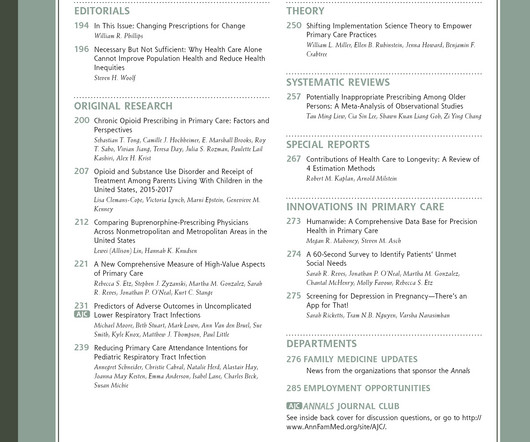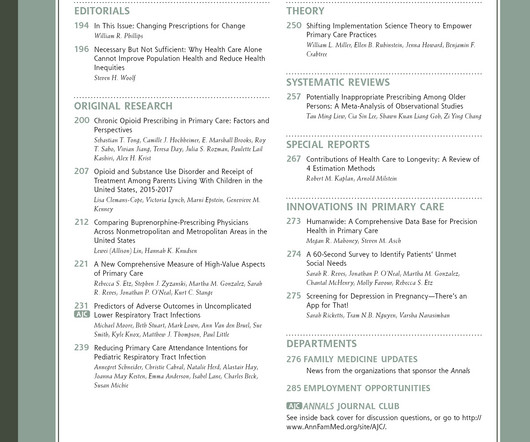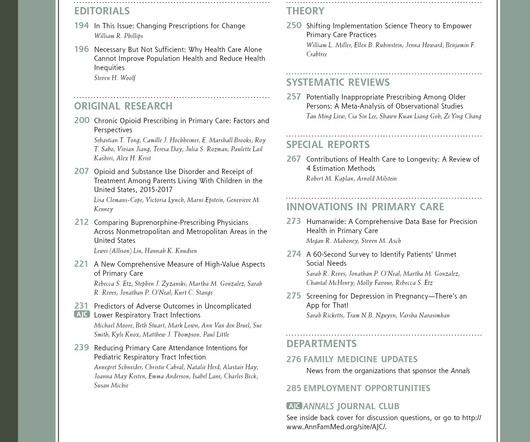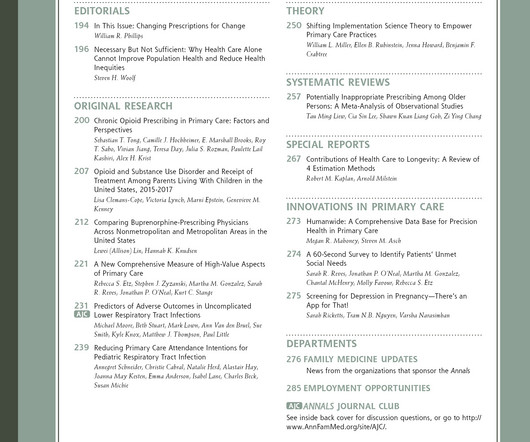Effect of brief dermoscopy training on primary care providers' diagnostic accuracy on a test and in practice [Education and training]
Annals of Family Medicine
NOVEMBER 20, 2024
Objective: To evaluate the effect of brief dermoscopy training on primary care providers' diagnostic accuracy on a test and in clinical practice. Setting: Divisions of Family Medicine and Community Internal Medicine at a large academic medical center in Southeast Minnesota.
















Let's personalize your content